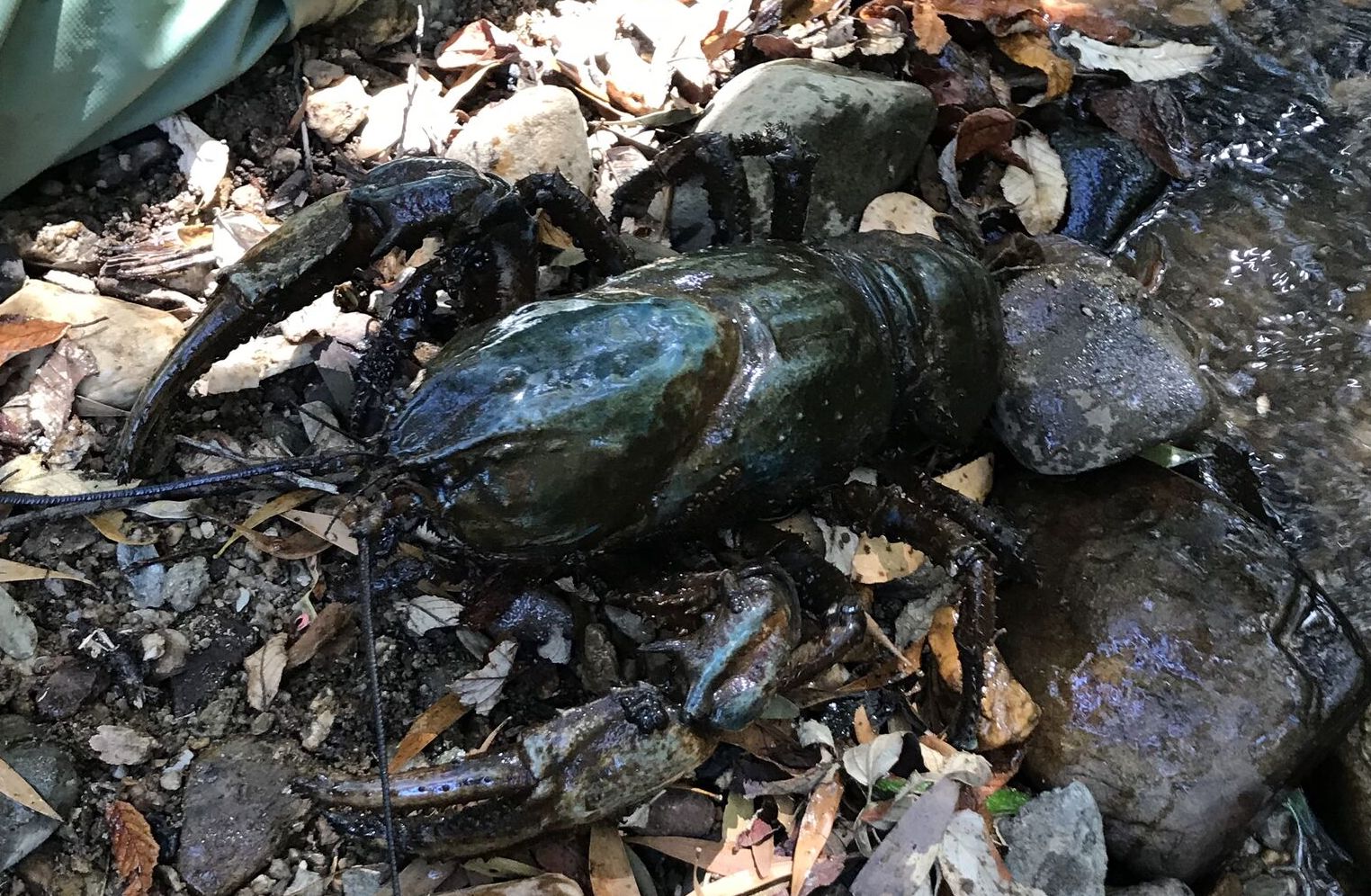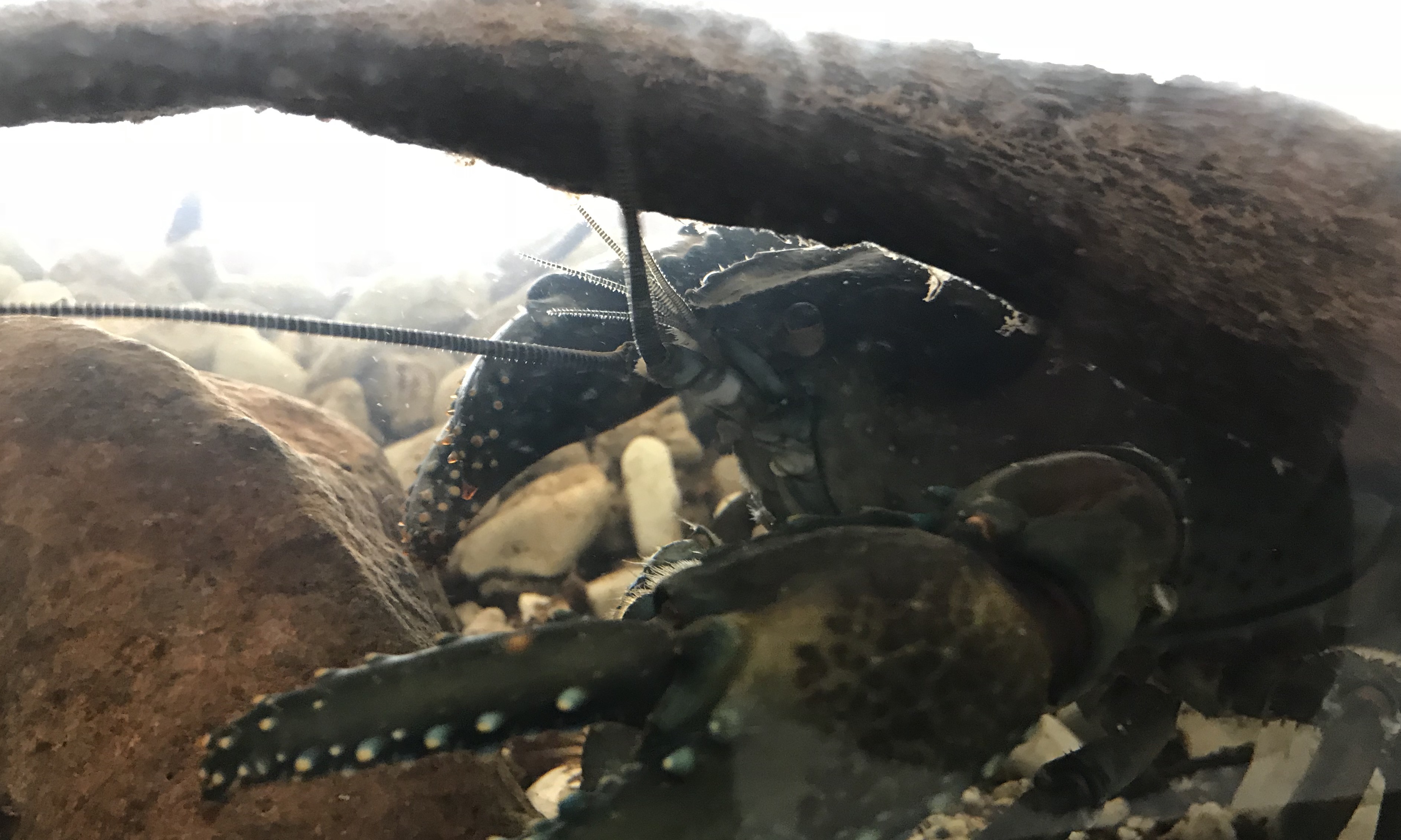
Environment
The climate legacies in our lakes

The endangered Tasmanian giant freshwater crayfish is the largest freshwater invertebrate in the world. But establishing the roots of this river monster’s real name was just the start of the story
Published 14 December 2018
Lutaralipina or tayatea? Astacopsis franklinii or gouldi? William Gould or Charles Gould?
This was the swirling mix of confusion that faced me when I first started asking questions about the name of the largest freshwater invertebrate in the world – Tasmania’s giant freshwater crayfish, which the locals simply call, the ‘lobster’.

But why a University of Melbourne Teaching Specialist in Biochemistry and Molecular Biology would be asking questions like this is probably a good place to start.
I have a confession to make, I’m a fake Tasmanian. I wasn’t born there, but I love the place and I’ve been going there for so many years that people now assume I’m Tasmanian. Every summer, we pack up the car and the camper trailer and take the ferry from Melbourne to Devonport.
Northern Tasmania is where I go to clear my head and recharge my batteries. I breathe in the world’s freshest air, wander on secluded beaches or stand fishing on the banks of rivers that snake their way through ancient forests, before emptying their tannin-stained waters into Bass Strait.

Environment
The climate legacies in our lakes
These rivers are the home of a little known, but iconic Tasmanian animal – the endangered giant freshwater crayfish, or to give it its scientific name, the Astacopsis gouldi.
These animals are true ‘river monsters’. They live for up to 80 years and can reach a massive size, almost a metre in length and weigh up to six kilograms. These days, it’s rare to find animals more than 60 centimetres long and two to three kilograms.
Sadly, the lobster is in decline right across northern Tasmania, because of illegal fishing and habitat loss. Although they have been totally protected for 20 years, people still catch them and eat them, and I have been told that, yes, they are delicious.
However, the biggest threat to the lobster is land clearing and forestry activities that remove stream-side vegetation and leads to rivers and creeks silting up. Last year, a Threatened Species Recovery Plan for the lobster was released and, while I had known about the lobster for a long time, the Recovery Plan sparked me into action.

I wanted to raise awareness of this animal and the threats to its survival. Being an academic, I took an academic approach. In my spare time, I started researching the animal with a vague plan to write ‘something’.
I’ve had a long academic career in Biochemistry and Education research. Recently, I have been publishing on how misconceptions can be targeted to enhance student learning. Very soon, I realised that there are a lot of misconceptions out there about the lobster – beginning with its name.
I saw an exquisite convergence of my personal and academic interests. So, I set about writing a research article to correct the misconceptions around the names applied to this species.

I talked to academic colleagues here in Melbourne and Tasmania and drew on culture, history, art, ecology and biochemistry to trace the winding path of the lobster’s identity from the pre-colonial era through to the current world of molecular genetics.
Surprise can be a powerful trigger for lasting conceptual change – and I was in for a big surprise. My first thought was that this animal already had a name when Tasmania was invaded in 1803. I Googled and found widespread use of the word ‘tayatea’.
Out of respect for culture, I approached the Tasmanian Aboriginal Centre seeking permission to use this word. Annie Reynolds, a researcher in linguistics with the palawa kani language program told me that they were happy to approve my use of the Aboriginal name but that ‘tayatea’ is not, in fact, the Aboriginal name for the lobster.
It’s a misappropriated English transliteration of the Aboriginal name for the much smaller species from southern Tasmania, Astacopsis franklinii.
The Aboriginal name for our lobster is actually lutaralipina (lu-tah-rah-lee-pee-nah).
During the 20th century very little Aboriginal language was spoken in Tasmania. In recent decades, the Tasmanian Aboriginal community has worked carefully and methodically to revive its spoken form.
They have pieced together palawa kani from language that survived in Aboriginal communities on the Bass Strait islands, historical documents from the 19th century and audio recordings of spoken language made at the turn of the 20th century.
The word ‘lutaralipina’ comes from the journals of G. A. Robinson, who in the 1830s heard members of the Cape Portland tribe, from northeast Tasmania, use this word to describe the lobster.

Environment
On the DNA trail of the platypus
But the surprises didn’t stop there. The Allport Library and Museum of Fine Arts in Hobart holds one of Australia’s great colonial art treasures – the Sketchbook of Fishes – a set of 36 exquisite watercolours painted at the penal settlement of Macquarie Harbour around 1832 by the celebrated convict artist William Buelow Gould.
Some of Gould’s work featured in the recent Colony exhibition at the NGV at Federation Square. One of Gould’s paintings is the Freshwater Crayfish. Most people are happy to believe that this painting is of the lobster Astacopsis gouldi and that the species was named after the artist.
They are wrong on both counts. It’s the wrong location, the wrong species and the wrong Gould.
Up until the 1930s, the large lobster, along with the medium-sized western freshwater crayfish (painted by W.B. Gould) and the small southern freshwater crayfish were all considered variants of the one species, Astacopsis franklinii. This perplexing anomaly was recognised by the Melbourne amateur ecologist Ellen Clark.
In 1936 she published a comprehensive revision of the nomenclature of stream-dwelling and land crayfish of Australia.

Clark may have had no formal qualification in ecology (she enrolled in Science at Melbourne, but never completed a single subject), but she recognised that the three differently sized stream-dwelling Tasmanian crayfish were clearly different species.
Clark chose to name the lobster Astacopsis gouldi to honour the Tasmanian government geologist, Charles Gould, who published observations on the lobster’s distribution, diet and habits in 1870.
As a scientist, I understand that formal scientific names have their place. But as a society, we choose the ‘common’ names.

And now, I hope, it’s time for the lobster to return to its roots, to be known commonly as lutaralipina – the name it was given by Tasmania’s First People – and to bring attention to its threatened future.
Exploring the lutaralipina’s past has taught me that history surrounds us, and that we interact with it every day of our lives. Both natural history and human history. But they are not separate.
The world we experience is an embodiment of all that has gone before, because humans are an integral part of the environment. The natural world shapes us and we, in turn, shape the natural world.
But not always for the best.
This article acknowledges Tasmanian Aborigines as the traditional owners of lutruwita, the land that is the focus of this research. It also acknowledges the traditional owners of the land on which we live and work, the Wurundjeri people of the Kulin Nations. We pay our respects to both sets of Elders, past, present and future.
Associate Professor Mulhern’s research paper Correcting Misconceptions about the names applied to Tasmania’s giant freshwater crayfish Astacopsis Gouldi appears in the Papers and Proceedings of the Royal Society of Tasmania and is available in hard copy.
Banner image: Supplied